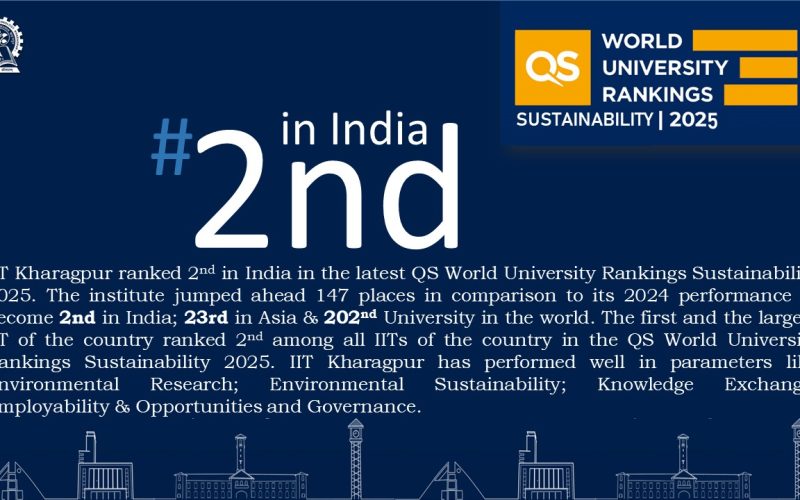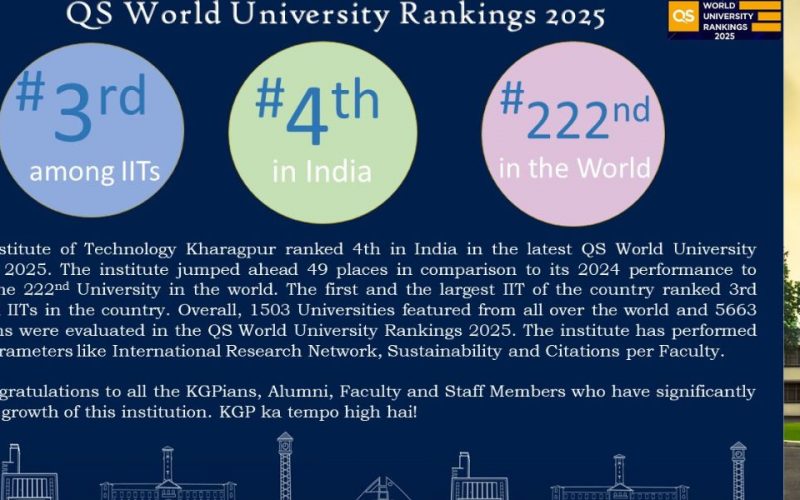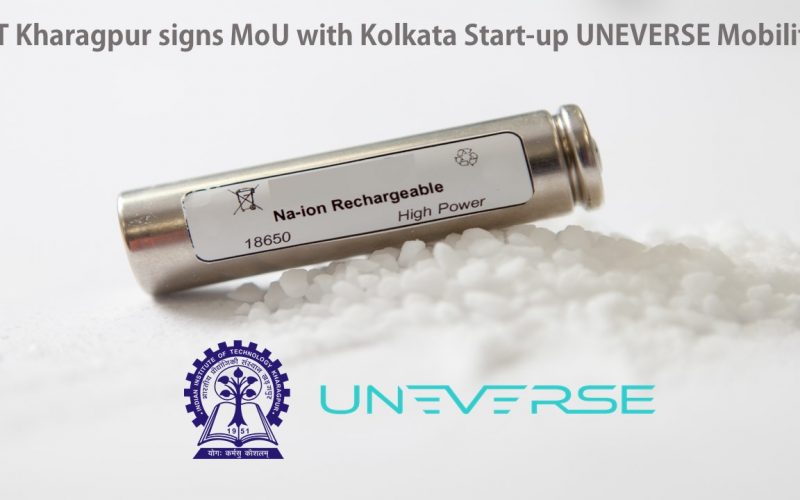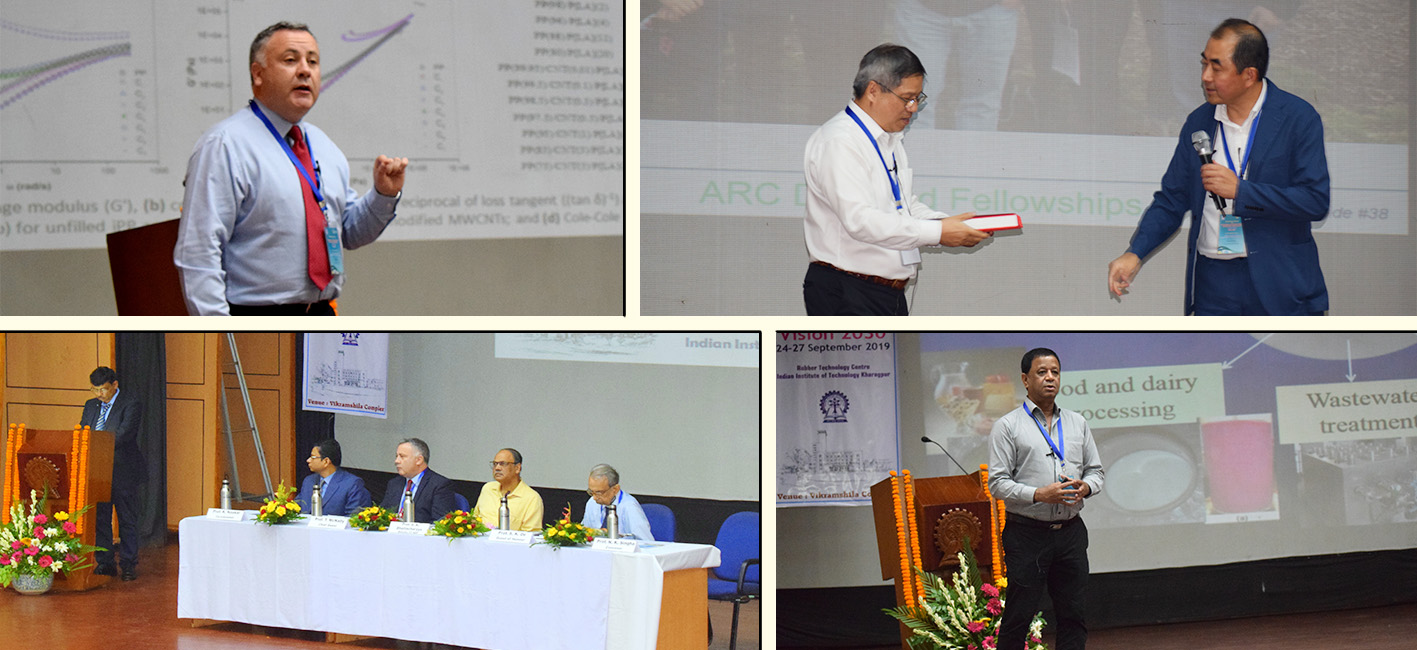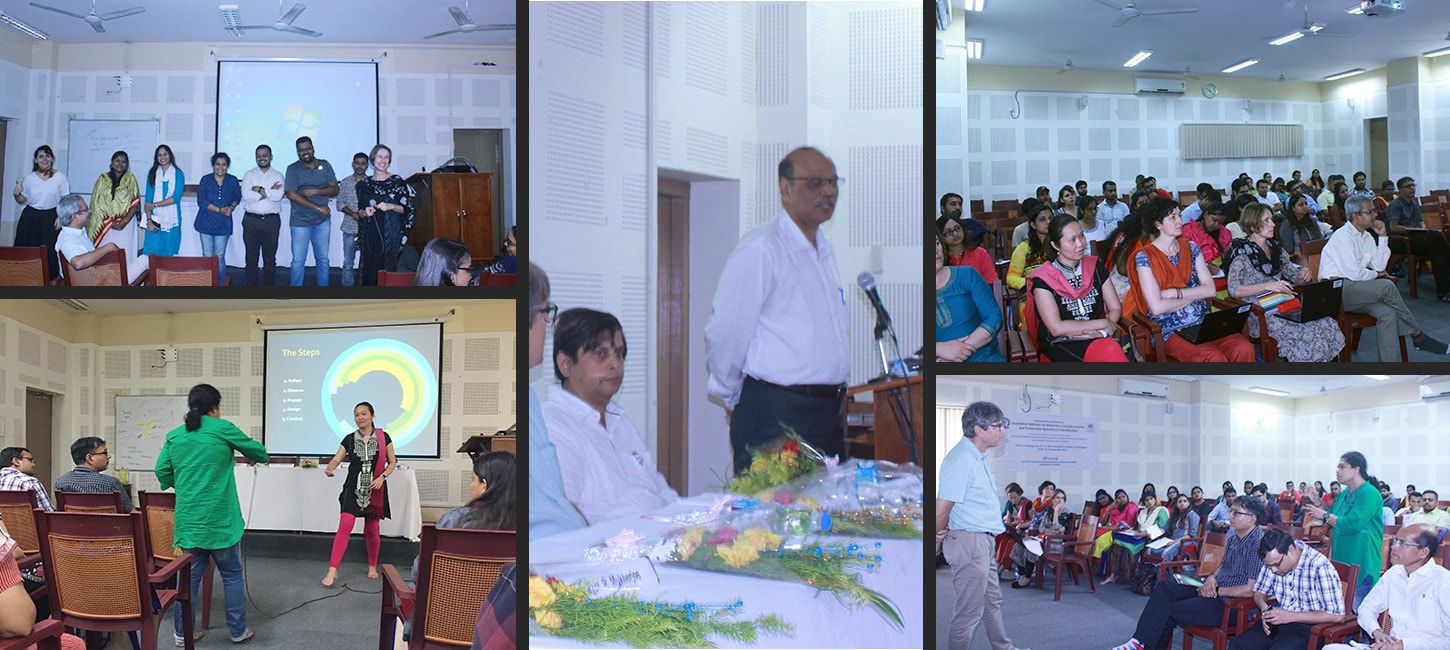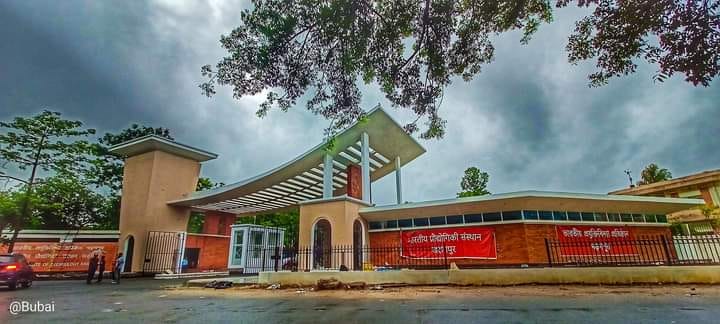
IIT Kharagpur ranked 4th in India & 215th in the World in the latest QS World University Rankings 2026
Indian Institute of Technology Kharagpur ranked 4th in India in the latest QS World University Rankings 2026. The institute jumped ahead 07 places in comparison to its 2025 performance to become the 215th University in the world. The World University Ranking 2026 by Quacquarelli Symonds (QS) featured 1501 Universities from all over the world and evaluated 8467 institutions in total. The institute has performed well in parameters like Sustainability, Employer Reputation, Citations per Faculty and International Research Network. Times of India (Print) …



